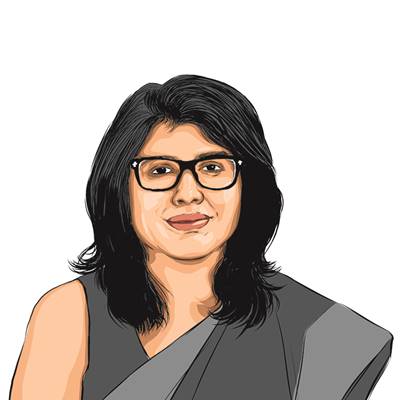Opinion Sumana Roy writes: The Sonipat school of history – universities without context
The purposive forgetfulness, a characteristic shared by Sonipat and other small towns where history seems to be a useless burden, where everything must be turned new, is oppressive. It messes up our sense of time and history and leads us to think of the world as a supermarket
 The colonisation of Sonipat is not completely unlike European colonisation — except that it is almost impossible to find any trace of Sonipat’s history, or its mention in the Mahabharata, for instance, in daily living here.
The colonisation of Sonipat is not completely unlike European colonisation — except that it is almost impossible to find any trace of Sonipat’s history, or its mention in the Mahabharata, for instance, in daily living here. In this flat in Sonipat, a place to live in as much as a place to live away from the university campus, I am bereft of the sense of having arrived in the middle. It is the nature of evolution for new entrants to always arrive in the middle, like Homo Sapiens did. It was empty, this flat, when I first saw it. No one had lived there. The owner had bought it more than a decade ago, and left it to grow muscles like other financial investments are supposed to do — the market is a gym, our money, whether it’s a term deposit or mutual funds or the real estate, develops muscles and a figure while we sleep, work and digest our food. He had bought the flat with that intent.
By the time I could move into the flat, I had heard the phrase from everyone associated with it: “Ekdum naya bana diya”, we’ve made it completely new. The only thing over which I had had some control was the only thing that was old: The wooden furniture, bought from a used goods market in Delhi. Everything in this place has had to be bought — including, for instance, rubber bands, something all Indian households salvage to reuse. It is hard to articulate this sense of populating this version of tabula rasa. For someone with my low physical energy, there is exhaustion, but there are moments when I am aware of what it can set off: A feeling of great power, not of creativity as much as of control.
The university where I teach is in Rajiv Gandhi Education City. On the way to its campus, from the shuttle, my colleagues and I see fields of mustard, yelling yellow. A few traces of an older way of living remain: The remainder of an archway in a house, cowsheds, the snoring of buffaloes. Once inside the premises, it is not only the architecture that changes. It’s the vegetation. They have grown elsewhere, been incubated in plant nurseries, and then ferried from there to become an integer of what would be called the “landscape”. Dislocated, they are metaphorically rootless. I mention the plants because they help me to understand the relation between history and its unavailability. The same species of plant is variously priced, depending on its age, which is measured in height. History here is not a function of time but of money. One can buy the oldest trees depending on the strength of one’s purse to create the illusion of an older residency. Pedigree and cultural capital, once available through incestuous familial and institutional lineage, have been replaced by the cunning of new capital — reputations are erected overnight, much like these buildings themselves. The immediate casualty to living in such an environment is the loss of context — we have to remind ourselves of where we are, of the postal code, for this architecture and its manicured habitat of plant life could be a capitalist globalised everywhere, Dubai airport or a nursing home, such is the awareness of being in an antiseptic setting.
The colonisation of Sonipat is not completely unlike European colonisation — except that it is almost impossible to find any trace of Sonipat’s history, or its mention in the Mahabharata, for instance, in daily living here. The purposive forgetfulness, a characteristic shared by Sonipat and other small towns where history seems to be a useless burden, where everything must be turned new, is oppressive. It messes up our sense of time and history and leads us to think of the world as a supermarket where everything can be bought and curated. Perhaps that explains why I feel disoriented by the sense of Sonipat having no “outside”.
Sonipat is only a metaphor for an ethic where everyone feels Adam-like, though it is not creation but curation that is being done — furniture can be bought, faculty can be accumulated, plants can be asked to grow up on steroids. What does this imply in art, in aesthetics, in politics, in emotional health? It implies the loss of the “Found” aesthetic from art and literary culture, which holds in it the idea of both continuity and divergence, and which is essential to our sense of history. Often, in creative writing classes, I encounter this lack of affiliation to history or literary ancestry, of those who have written or created before us — students feel that they can be writers without reading, as if they are the first writers writing.
Who can blame them when they hear of “Founders” and “Founding faculty” so often? This Sonipat school of history, a phrase I use, quite obviously, as shorthand, is being re-created and practised in other parts of India — by changing names of towns and neighbourhoods, by truncating syllabi, and by an unequivocal lubricating of both the phrase and the idea of a “New India”.
Sumana Roy, a poet and writer, is associate professor of Creative Writing, Ashoka University. Views are personal



